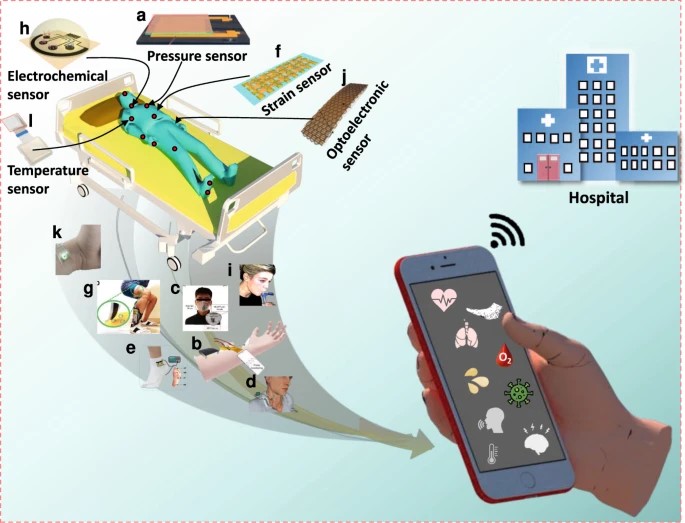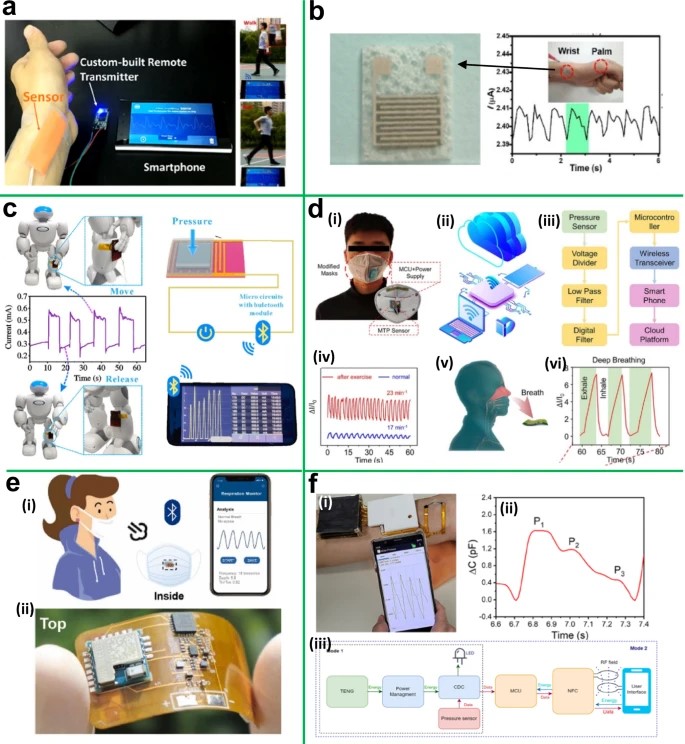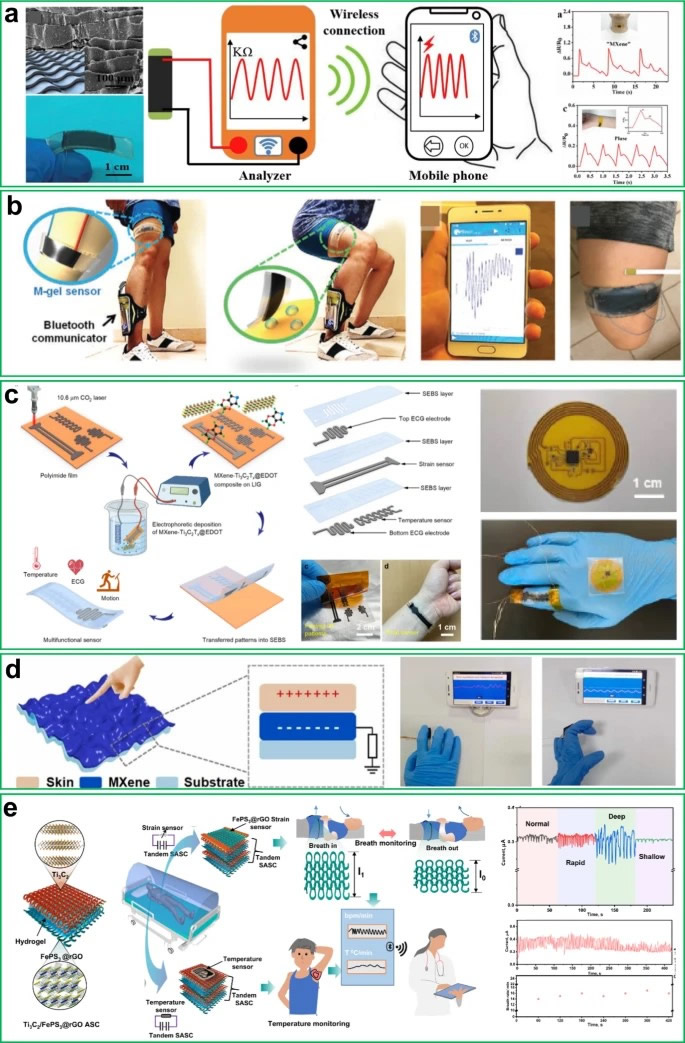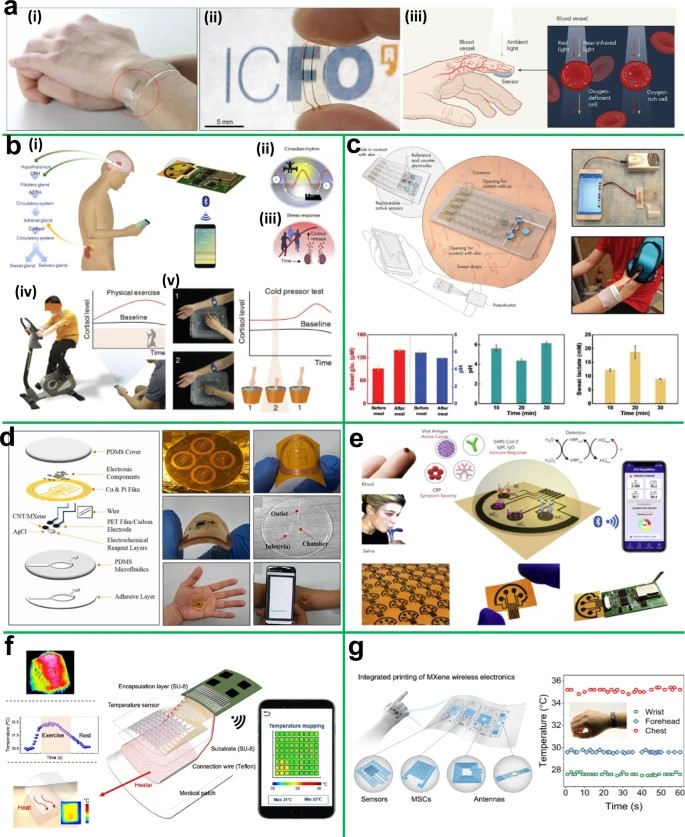This paper provides an overview of 2D material-based wearable sensors and biosensors for remote health monitoring systems (RHMS), focusing on five types of wearable sensors and classifying them according to their sensing mechanisms, such as pressure sensors, Strain sensors, electrochemical sensors, photoelectric sensors and temperature sensors.
Wearable sensors have made significant progress in sensing physiological and biochemical markers for telemedicine. By monitoring vital signs such as body temperature, arterial oxygen saturation, blood glucose, and respiratory rate, wearable sensors offer great potential for early detection of diseases. In recent years, significant progress has been made in the development of wearable sensors based on two-dimensional (2D) materials, enabling such sensors to exhibit flexibility, excellent mechanical stability, high sensitivity, and accuracy, introducing a new approach to remote and real-time health monitoring. new method.
According to TOPCHIP ELECTRONICS, recently, the University of Chemistry and Technology Prague (University of Chemistry and Technology Prague) published a review article entitled "Wearable sensors for telehealth based on emerging materials and nanoarchitectonics" in the journal npj Flexible Electronics. Two-dimensional material-based wearable sensors and biosensors for remote health monitoring systems (RHMS). This article focuses on five types of wearable sensors and categorizes them according to their sensing mechanisms, such as pressure sensors, strain sensors, electrochemical sensors, photoelectric sensors, and temperature sensors; an overview of the properties of 2D materials and their impact on wearable The impact of wearable sensor performance and operation; the basic sensing principles, mechanisms and applications of wearable sensors are discussed. The article concludes with a discussion of the barriers and future opportunities in this emerging field of telemedicine.

In this review article, the researchers provide an overview of 2D material-based wearable sensors/biosensors and proof-of-concept telemedicine systems developed over the past four years. Emerging wearable sensors based on 2D materials and nanoarchitectures offer users many advantages, including vital sign monitoring such as body temperature, arterial oxygen saturation, sweat biomarkers, respiratory cycle, blood glucose, heart rate, and motion, and early viral/ Influenza (i.e. SARS-CoV-2) identification. The researchers give an overview of different wearable sensors (pressure sensors, strain sensors, electrochemical sensors, photoelectric sensors, temperature sensors), including their working principles, detection mechanisms, integration with electronic circuits, and applications in human body monitoring.
First, researchers describe an integrated healthcare system that uses pressure sensors to provide real-time information on human health. The system mainly monitors heart rate (attached to the human skin) and breathing cycle (installed on the mask). The wearable pressure sensor described here works under repeated installation and removal in typical environments. Nonetheless, in practical applications, pressure sensors will also be exposed to challenging environmental conditions, including sweating and high humidity, which may affect the stability of the 2D material and the performance of the sensor. Therefore, more research on the mechanisms behind job stability in artificially complex environments is necessary. In addition, effective encapsulation methods with less impact on the properties and nano/microstructure of 2D materials should be investigated.

Next, the researchers focused on tracking human activity by integrating wearable pressure sensors that can quickly identify a person's large and small movements and transmit the data to a healthcare provider or the user's smartphone. This includes a range of motion monitoring such as heartbeat, muscle fatigue, body joint flexion, Adam's apple vibration and breathing rate. The use of integrated textile stress sensors for remote health monitoring is then also discussed. Resistive strain sensors show excellent stretchability and sensitivity; however, they suffer from hysteresis, poor linearity in the outer range of strain, and instability due to environmental changes (humidity and temperature changes). For example, transition metal carbides (MXenes) are oxidized in the open environment, which shortens the shelf life of sensors and causes problems with consistency, reliability, and reproducibility. The use of antioxidants and a modified MAX-phase synthesis process are expected to address the stability issue of MXenes, but this work is still limited to the laboratory scale. Furthermore, there are difficulties in developing strain sensors capable of detecting dissociated strains in various directions and on multiple deformation planes. To overcome this limitation, more research on innovative sensor architectures and 3D nanostructures is needed.

The researchers then introduced electrochemical biosensors to remotely monitor various biomarkers such as stress hormones, lactate, glucose, sweat pH, and COVID-19 in saliva. Most biosensors evaluate only a few biomarkers. In the future, more research is needed to develop new 2D material-based sensors and expand the understanding of sensing to monitor various biomarkers. In healthcare, expanding the use of wearable sensors requires an understanding of biofluid composition and its relationship to health and specific disease conditions. The researchers also outline wearable photoelectric and temperature sensors based on 2D materials for telemedicine applications. Graphene is the most widely studied two-dimensional material for temperature sensors and photoelectric sensors, and has been developed from the research stage to clinical applications. However, other 2D materials such as transition metal dichalcogenides (TMDs), black phosphorus (BP) and MXenes are rapidly filling this gap. Compared with graphene, these materials have certain advantages in bandgap range and photocurrent generation capability, making them potential candidates for future wearable photosensor development.

The researchers expect that wearable sensors based on 2D materials will become a new sensing platform for the healthcare industry. Significant challenges remain to demonstrate that wearable and biosensors based on 2D materials can “beat” commercially available sensors in all key properties. In addition to the price of wearable sensors, several challenges must be thoroughly addressed, such as the necessity of flexible (or self-powered) power sources, the stability and mass production of 2D materials, the privacy of health monitoring data, etc. Most of the current work has focused on graphene oxide, Ti3C2Tx, and BP; however, there are still many viable 2D materials to be investigated.
Furthermore, the RHMS realized by wearable sensors/biosensors and big data processing holds great promise in providing users with real-time health monitoring information and diagnostic tools. Future research on how to improve the sensing accuracy of wearable sensors based on 2D materials could broaden their applicability. Next, the researchers suggest encouraging future research and applications in the fields of wearable sensors and telemedicine: (i) low-cost industrial-scale manufacturing must be developed; (ii) artificial intelligence (Al)-based automated decision-making systems (Al Integrate with RHMS), monitor real-time data while checking patient’s past medical history to help healthcare providers quickly identify abnormalities; (iii) create more advanced multi-parameter sensing wearable devices and telemedicine platforms, powerful and low-cost , can be used in various healthcare fields; (iv) close cooperation with electrical engineers is required to develop healthy signal processing and data transmission units with flexible circuit boards, compact size, low power consumption, and light weight. Existing circuits are made with traditional chips that are not suitable for specific applications, such as those placed in contact lenses to measure eye pressure. Therefore, it is necessary to develop a small-sized circuit system with long working life to track human physiological information. The researchers believe that this review can provide readers with a comprehensive understanding of the current status, challenges, and future prospects of innovative 2D material-based wearable sensors for telemedicine systems.

